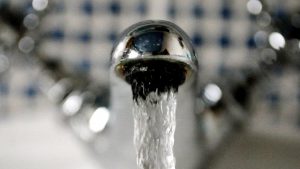If you have hard water, you know it. Leftover soap residue after you wash your hands, a cloudy residue on dishes after they’re washed, clothes that never really get clean — all are symptoms of high levels of calcium and magnesium in your water. That’s why you’ve come to rely on your water softener.
For the most part, water softeners have a lifespan of 10 to 20 years. And, outside of filling them regularly with salt, most people believe there isn’t much maintenance to be done on a water softener. However, there are a few minor pieces of maintenance that can make a major difference in the lifespan of your water softener.
If you have questions about or are having issues with your water softener, or you believe it’s time to have a water softener installed, call the experienced team at Plumbing by Jake at (702) 948-7201.
Mush and Bridges
Called a “salt bridge,” this hardened crust of salt forms at the bottom of your brine tank, creating a pocket between the salt and water. This means your salt can’t dissolve to soften the water. If your water softener doesn’t seem to be working properly (leaving residue on skin, hair, and dishes), but you have additional salt, you may have a salt bridge.
Very carefully use a short pole or broom handle to gently bump the top of the salt crust. If the salt has petrified, it should begin to break up. If you can see a salt mush on the bottom of your brine tank, this is a bigger problem. If you’re not able to visually identify this sediment, but you are unable to make your “salt bridge” break or crack, you likely have salt mushing.
After the salt in your water softener dissolves, it recrystallizes then leaves a goopy pile at the bottom of your brine tank. This results in your water softener being unable to properly complete a cycle and creates a potentially damaging blockage in your brine tank. In some cases, you can shovel out salt mush, but you’ll likely need to drain your water softener tank to do so properly.
Use the Right Kind of Salt
As with many things in life, you get what you pay for. There are usually three different types of salt used for water softeners:
- Evaporated salt – This type of salt is the purest form with more than 99% sodium chloride. It’s also the most expensive choice for water softener salt.
- Solar salt – Solar salt can be found in crystal and pellet form and is created with evaporated seawater. This type of salt is more dissolvable than rock salt and is a better, mid-priced option for water softeners.
- Rock salt – The least expensive and most highly available choice for water softeners, rock salt can leave mineral residue in your tank.
Check Your Salt Levels
While we’re on the subject of salt, it’s important not to forget the most basic part of water softener maintenance: refill the salt in the brine tank.
Make a note on your calendar to check the salt levels once per month. You’ll likely only need to add salt every two months, but actual usage can vary based on the number of people in your household and how much water you use.
If the salt in your water softener is covered in water or completely wet, you’re okay. Cover it back up and check again in a month. If the water level looks low or the remaining salt is dry, it’s time for a refill.
Get Familiar with Your Valve
Between the water softener tanks, there is a valve and nozzle that generates the suction to draw water in and renew the system. You’ll need to refer to your owner’s manual for specific instructions on how to do it, but cleaning the venturi valve and nozzle helps prevent clogs. It is important to note that you must release water pressure in the tank before working with the valve and nozzle or there is a risk of injury.
Know Your Water Softener’s Limits
Problems with water softeners don’t happen very often, but when they do, you can’t clean or maintain your way out of them. If you’ve followed the maintenance tips above and notice any of the following:
- Dingy or stiff laundry that doesn’t seem to be getting completely clean or rinsed
- “Soap scum” feeling on your hands, face, or hair after washing
- Your water tastes different
- Mineral scale buildup on tubs, faucets, sinks, and pipes
- Very frequent or non-stop system regeneration
It’s time to call in the pros at Plumbing by Jake.
Call Today to Schedule Your Water Softener Check-Up
If you’ve spotted any issues with your water softener that are not resolved with basic maintenance, call Plumbing by Jake at (702) 948-7201. If it’s an emergency, we are available for 24/7 service.
If you just have a question and need some guidance, give a call and our experienced technicians can provide answers. We also offer a 100% satisfaction guarantee on parts and repairs.

